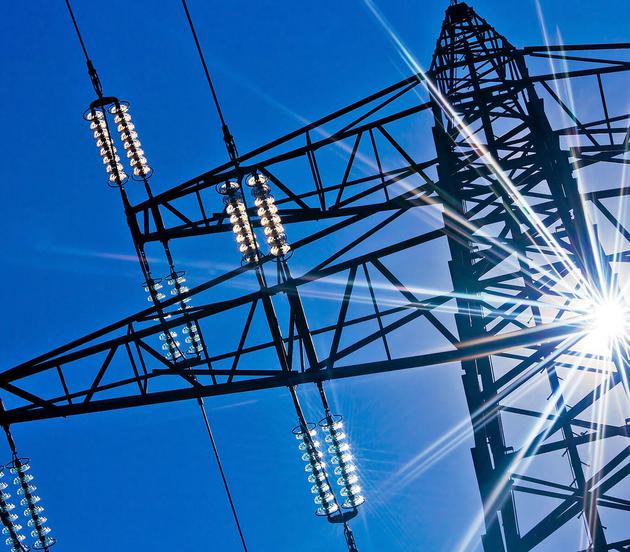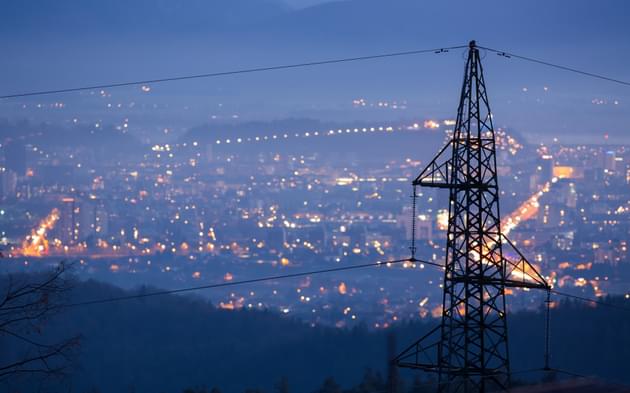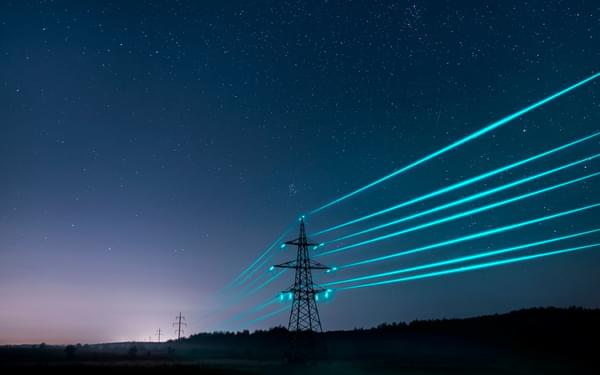Power Procurement: Overcoming the demand planning gap

“ We need to build 5x the amount of transmission infrastructure in the next seven years than has been built in the last 30. ”
Leah Holmes
Associate, Smart Energy and Sustainability

By now, most of us are aware of the UK’s net zero emissions by 2050 target. It’s tattooed into our consciousness as a nation.
As consumers, we’re trying to develop more sustainable habits. Across the built environment we’re finding ways to build greener and designing with long-term, climate resilient communities in mind. And, in parallel to this, our government is focusing on building a secure, home-grown energy sector that reduces reliance on fossil fuels and our exposure to volatile global wholesale energy prices.
Sounds like we’re on the right track. Well, no, not really. At this point, there isn’t a comprehensive power grid delivery plan to back up those ambitions. Which means there’s every chance the government will fail to hit its targets.
No power grid plan, no net zero
The government has set an ambition for all UK electricity to be generated using clean sources, a classification which now includes nuclear, by 2035.
Greenhouse gas emissions from UK power generation have fallen considerably over the last three decades but around 40 per cent of the nation’s electricity still comes from natural gas, a polluting fossil fuel.
Meeting our 2035 target is therefore going to require a rapid expansion of wind, solar and nuclear power during the next decade.
You might think the greatest challenge is building the generating assets —but, in fact, network capacity keeping pace with electricity generation is proving just as difficult. It’s becoming clearer by the day that rapid investment in the grid is something we desperately need.
How can we create energy equity, security and sustainability?
It’s a multi-billion-pound question. One that there’s no easy answer for. But one thing’s for certain, the ‘energy trilemma’ is the top priority.
All signs suggest that the more energy the UK needs, the less energy secure we are as a nation. The energy trilemma — reliability, affordability, and sustainability — hugely impacts our everyday lives and we simply must find solutions that allow businesses, organisations and individuals to strike a balance between those three core energy elements. Our energy transition hinges on it.
Supporting this energy transition, local authorities — as the closest body of government to members of the public — play a critical role in ensuring communities benefit from initiatives and new opportunities designed to drive us towards net zero.
Looking through the lens of a local authority, this starts with the recognition that answers often lie within the communities in which they serve, with people already participating in energy systems and contributing to a ‘just transition’ in niche ways.
Around the country this is taking shape as local authorities develop climate action plans, engage in innovative private-public partnerships, participate in renewable energy procurement schemes, support community energy cooperatives and are even purchasing energy generating assets such as onshore wind and solar farms.
Why reliable energy is the hottest commodity around
Podcast
Leah Holmes features in the latest Place North West podcast exploring the state of the National Grid, increasing demand for reliable energy, and how the private and public sectors are tackling the problem.

Access SCR: The race for power
As part of Ofgem’s Access and Forward-looking Significant Code Review (Access SCR), it looked at the fairness of ongoing locational charges and the mechanisms that determine who pays.
For example, network demand charges may be at a premium in high-demand areas like city centres or generators may face higher charges in an area of higher generation where there isn’t much more demand.
As a result of the review, it made the decision to reduce the cost of connecting to the distribution network by removing or reducing the amount new customers contribute to its reinforcement.
Instead, these costs will be recharged through annual distribution network charges and paid by everyone in a DNO area.
Furthermore, Ofgem will remove the contribution to wider network reinforcement for demand connections as well as reducing the contribution for generation connections.
These decisions recognise that it’s not the newest connection in an area that has caused this constraint, but rather the sum of all the existing demand and generation in any given area. As a bi-product, DNOs should now be able to strategically invest in the distribution network where previously they were obliged to only upgrade to support the needs of each individual change.
On the surface, this seems like a positive move. Amongst other reasons, developments previously considered unviable due to high up-front reinforcement cost could now go ahead.
However, it’s driving a frenzy for power by removing a cost barrier in constrained areas but creating a queue, leaving developers to compete for any existing power capacity on the grid. Those that are successful with their application, and ready to pay, will be able to meet their development timeline; those that aren’t are potentially going to have to wait for years and years before reinforcement happens.
Real estate development can be described as a game of chess. And right now, energy is the most valuable piece on the board.
“Eight years. Let this sink in. Eight years has been quoted to get the required power connections for a proposed development in the pharmaceutical sector in the Thames Valley.”Leah Holmes
Associate, Smart Energy and Sustainability
What happens when power is more valuable than land?
Article
Leah Holmes assesses the impact of limited grid capacity on future developments.

Sustainable power procurement: Is it time to get tactical?
Where there’s competition between sites to access power, it’s time to get tactical with power procurement strategies for real estate portfolios and across the built environment.
Securing power capacity requires an approach all of its own for this increasingly rare commodity. When deployed strategically, power procurement strategies can even be a source of competitive advantage. Benefits include substantial cost savings, stronger and more productive ties with suppliers, and shared, innovative solutions to problems.
This potentially powerful lever calls for a wide range of information, which will lead to decisions around how to phase both investment in power and a development build-out programme.














